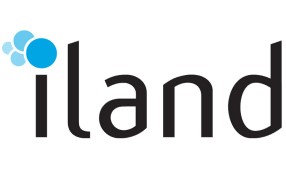
Therefore, it’s never been more important for these organisations to take the necessary steps to protect their business from any of the above scenarios, which have become increasingly prevalent. Despite these constant threats, customers want assurances that there will be no impact on day-to-day operations, should a partner business suffer a loss of data or significant business disruption.
IT resilience powering business continuity
Nearly every organisation on earth is dependent on some form of technology and connectivity. The term ‘IT resilience’ is directly intertwined with the resilience of the business, in a time of crisis. The strength of an organisation’s cloud or on-premises infrastructure is the backbone of the organisation. If it fails or suffers an outage, many subsequent businesses could suffer significant business disruption.
Organisations develop business resilience plans to adapt rapidly when disruptions occur. They help it maintain business operations and keep data, staff and the company’s reputation safe. Business resilience should be teamed with IT resilience, to continue business system operation no matter the disruption.
Many organisations instantly think of maintaining backups when they hear of business continuity. And to some degree they are correct. However, that’s only part of the problem. Disaster Recovery (DR) and Disaster Recovery-as-a-Service (DRaaS) has been increasingly adopted to protect businesses against outages. It relies on infrastructure and a strategy that deals with worst-case scenarios. Many organisations align the term ‘Disaster Recovery’ with a natural disaster or potential meteorite strike that threatens human life. Yet a software fault, malicious external hack, subsequent data breach, or a careless accident initiated by an insider can be equally disastrous from a business disruption perspective.
Moving from backups to Disaster Recovery
Business resiliency is all about the ability to bring your organisation online to another location as quickly as possible. It enables an organisation to continue running the business and supporting customers internally and externally. Backups are crucial to protecting data, maintaining archives and compliance. When layered with a DR capability, they reduce the chances of a business being disrupted.
The disadvantage of backups, especially when organisations try to recover quickly, is that they are prone to unacceptable Recovery Point Objectives (RPO). If a business is only backing up every night and something happens an hour before the backup, an entire day of workloads is lost. Additionally, backups can have painful Recovery Time Objectives (RTO). If it takes 17 hours to recover an organisation’s entire data centre from tapes, in addition to how long it has been down for, that’s a considerable amount of time.
Local backups are being targeted by malicious software. It targets backup applications and database backup files, proactively searching for and fully encrypting the data. Backups also need something to restore to. If the power fails in the building where the business’ data is housed, backups are not going to help.
A cloud-based DRaaS solution can fill the gaps
A cloud-based DRaaS solution can fill this gap. It is a flexible, cost-effective way to deliver essential DR capability without the CAPEX costs and pains of managing a physical DR site. A business can instantly switch to its DRaaS environment at the press of the button. This delivers an isolated, production-ready copy of its entire infrastructure available in the event of unplanned downtime or data loss.
Regulations such as GDPR and CCPA are increasing in popularity and becoming more stringent. DRaaS helps organisations to illustrate that they have taken all necessary steps to protect their customers’ data. It gives them confidence that should the worst-case-scenario happen, their data – and business – is protected.
With DRaaS, teams can run recovery tests in replica environments in a short time. It can provide full visibility into a business’ response during a ‘disaster’. This is much more effective than annual testing of on-premises systems. It helps businesses develop a full disaster recovery plan with absolute confidence it works when needed, minimising potential downtime.
Quickly enacting these DR plans increases this confidence. A quick and coordinated response amid an outage increases customer faith in the organisation that it can instantly switch to a cloud-based data centre if any of the primary equipment fails.
Downtime is increasingly disruptive
Many businesses are facing an unprecedented financial crisis due to the COVID-19 pandemic that is driving them out of business. In retail, many have shifted to, or quickly started to offer improved eCommerce channels. It allows them to deliver their services or goods direct to customers. Regardless, this has led to shrinking revenues and severe tightening of budgets.
The last thing a business needs is any unscheduled periods of downtime due to IT systems going offline. The online attack surface is widening in many industries, as cybercriminals take advantage of the current global climate. They are ramping up their efforts to cause further disruption and distress.
DR is increasingly critical
Customer experience rests upon IT systems. Interruptions of service, inability to transact and data loss can be frustrating, debilitating, or even life-threatening in certain industries. Organisations should also think about the costs of downtime and the perception of customers should a vital application be down, especially during a time when a global pandemic is having a knock-on effect throughout the supply chain.
Acceptable amounts of downtime and data loss are at an all-time low. Recovery features that were once considered ‘nice to have’ are now mandatory. With the emphasis of IT resilience on maintaining business processes and making a complete recovery as soon as possible, is making DR increasingly mission-critical to day-to-day operations. Taking the necessary steps to overcome business disruption when faced with a potential ‘disaster’ easily outweighs the initial financial outlay of implementing an effective DRaaS solution.
iland is a global cloud service provider of secure and compliant hosting for infrastructure (IaaS), disaster recovery (DRaaS), and backup as a service (BaaS). It is recognised by industry analysts as a leader in disaster recovery. The award-winning iland Secure Cloud Console natively combines deep layered security, predictive analytics and compliance to deliver unmatched visibility and ease of management for all of iland’s cloud services. Headquartered in Houston, Texas and London, UK, iland delivers cloud services from its data centres throughout the Americas, Europe, Australia and Asia.


























